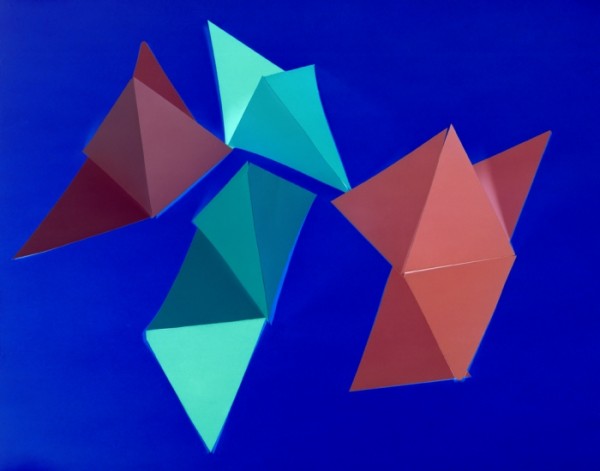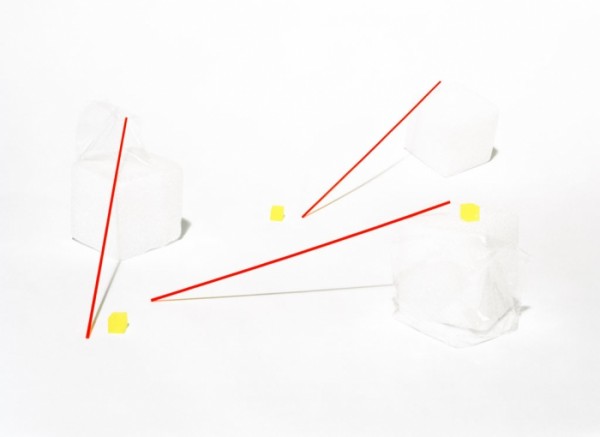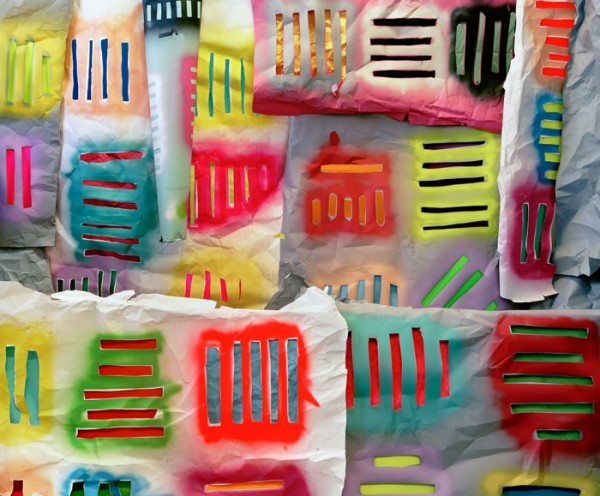Jessica Labatte
Wednesday, 20 February 2013
Work from her oeuvre.
“JF: Without reducing you to a specific “school” of photography, you seem to be in company with a generation of young photographers interested in the physical process of photography, yet your work also deals with larger issues/metaphors related to illusion, performance and perception. Do you see your work being in dialog with that of say Jessica Eaton, Sam Falls, or Lucas Blalock? How do you see it standing apart? Do you see a dialog between early photographers like Man Ray as well? What do you think spawned this rebirth of process driven work?
JL: Photography is evolving as a medium, and things that were once uniquely photographic are now being questioned. I believe that the prevalence of process-oriented photography is a response to the saturation and ease of digital technologies. I don’t think that photographers are necessarily reacting against the digital technologies; more that we are inspired by the creative potentials new technology is opening up. There is a feeling of freedom to appropriate techniques from other mediums, as well as looking to the past for more tactile approaches to photography. The popularity of photograms and collage are good examples of this. I also think elaborate and complicated photographic processes are a way for artists to slow things down. Everything moves with such speed in our lives, creating works that require the investment of hours of labor seem to be a way to counteract this.
Even though, I am newly acquainted with the photographers you mentioned, there are others artists engaged in this kind of work, who were more on my radar. I am thinking of people like Sara VanDerBeek, Shane Huffman, and Waled Beshty. The fact that there are so many people out there making work in this way shows that there is something in this cultural moment that makes this approach relevant and important.
I attended graduate school at The School of the Art Institute of Chicago, where there is a dense concentration of photographers working in interdisciplinary ways. This encouraged us to differentiate ourselves, to highlight our unique interests, while also engage in a dialogue about the future potentials of the medium. The ways I am addressing illusion and perception are part of what sets my work apart. I am concerned with not only how the images are created but also the experience the viewer has when viewing the work. My tricks with focus, confusion of two and three dimensions, and deceiving sense of space, draw attention to the way our eyes oscillate between illusionistic space and the flatness of the image. By creating places in the image where it is hard to tell what is flat or has dimension, what is in fact real or could have been created in Photoshop, I am forcing the viewer to question all that they see. Hopefully this will inspire a more intentional seeing.
Much of your work is very performance oriented, or relates to implied actions. I’m specifically thinking of your staged installations etc, and in some ways feels like you are fusing traditional still life work with the conceptual or performative traditions of artists like Sophie Calle (though in a much materially different way), do you see this relationship? Can you talk a bit about the ideas you’re exploring here?
There is indeed a certain amount of performance in my pictures, although I don’t think of my images as documents of a performance. This activity begins when I collect objects. I am constantly on the lookout for new subjects. I scour the alleys and thrift stores for new materials and then accumulate these large collections of stuff in my studio. When I begin to arrange an assemblage, I take out my 4 x 5 camera and set it up in the position where it will remain for the duration of the construction of that image. I then begin to place objects, one after another, drawing on visual associations, working out compositions, but always referring back to the view in the camera for my final decisions. It is a process that takes time, and requires a lot of walking back and forth to the camera and the pile of objects. There is a lot of intuitive decision-making and a lot of sampling in and out of different objects. In this way it is a very different kind of performance than what happens in much conceptual photography. I am not enacting a predetermined conceptual framework. I am allowing many improvisational decisions to shape the final image. This encourages space for me to play with the visual analogies and allow purely formal associations to enter the work.” – Humble Arts Foundation



